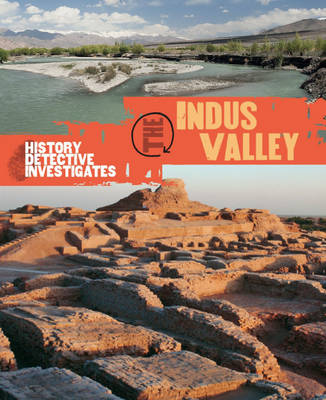The History Detective In
2 total works
Between 632 and around 1250, the Islamic Empire was one of the world's most advanced civilizations.The home of Islam was the Arabian Peninsula, inhabited by nomadic tribes, but it grew to encompass Syria, North Africa and Spain. It was Muhammad who unified the various Arab tribes to create the Islamic Civilization. The beliefs of Muhammed grew into the Qur'an which summond all Arabs to submit to God's will. It was Muhammad's teachings in the Qur'an that formed the foundation of the religion of Islam. Baghdad became the centre of the Islamic Civilization. Administration was based there and great palaces, mosques and gardens were built. It was the centre of power, trade, learning and the arts, making it the world's largest city until 930 CE. The end of the golden age of the Islamic Civilization was marked by the invasion of the Mongols in 1258. Contains maps, paintings, artefacts and photographs to show what life was like in the Islamic Empire. Ideally suited for readers age 8+ or teachers who are looking for books to support the new curriculum for 2014.
If you enjoy reading about the Early Islamic Civilizations then take a look at Stone Age to Iron Age, The Mayan Civilization, The Shang Dynasty of Ancient China and The Indus Valley.
If you enjoy reading about the Early Islamic Civilizations then take a look at Stone Age to Iron Age, The Mayan Civilization, The Shang Dynasty of Ancient China and The Indus Valley.
History Detective Investigates: The Indus Valley is a hands-on, investigative approach to history. Learn all about The Indus Valley, its people and the story of a civilization that goes back some 5,000 years. The Indus Valley was one of the first and biggest civilizations. It settled between modern Pakistan, Afghanistan, India and China. There were more than 1,400 towns and cities that made up The Indus Valley. The Indus people carved figures in clay, which tell us about their lives. We see the clothes they wore and the fact that they liked to dance. They also used terracotta to make pots, dishes and cups and they made lots of jewellery such as beaded necklaces, earrings and brooches. Contains maps, paintings, artefacts and photographs to show how the Indus people lived. Ideally suited for readers age 8+ or teachers who are looking for books to support the new curriculum for 2014. If you enjoy reading about the Indus Valley then take a look at Stone Age to Iron Age, The Mayan Civilization, The Shang Dynasty of Ancient China and Early Islamic Civilizations.

